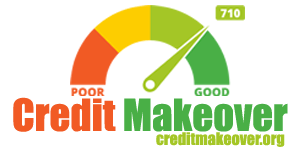Finding oneself entangled in the web of debts can be a daunting experience, but there exist debt consolidation alternatives that offer pathways to financial stability. As many Americans strive to navigate their financial courses, the allure of simplicity in managing debts often turns their gaze towards debt consolidation as a viable means of reclaiming their economic freedom. However, as experts at Bankrate advise, traditional debt consolidation loans are not a one-size-fits-all solution.
For those who find that such loans do not align with their financial backdrop, or perhaps their need for more tailored debt management strategies is evident, diving into the realm of debt relief options opens up new avenues. Whether it is to bypass stringent creditworthiness requirements or to skirt the limitations imposed by loan sizes, these alternatives can be engineered to fit the unique exigencies of one’s financial predicament.
Key Takeaways
- Investigate personalized debt management strategies for nuanced financial circumstances.
- Consider a broad spectrum of debt relief options to identify optimal pathways to economic resilience.
- Uphold the importance of aligning debt relief strategies with individual financial goals and situations.
- View traditional debt consolidation loans as one of many tools available, not the sole solution.
- Employ careful deliberation and expert advice to find the most effective debt consolidation alternatives for long-term financial stability.
The Necessity of Seeking Debt Consolidation Alternatives
High-interest debts can create heavy financial burdens and obstruct the journey toward financial stability. It is essential for individuals to recognize the multitude of debt consolidation alternatives available, tailored to different financial profiles and needs. This diversification enables more strategic financial decision-making processes, factoring in personal creditworthiness and the magnitude of outstanding debts.
Understanding the Impact of High-Interest Debts
High-interest debts, by their nature, can exponentially increase the overall amount owed, making them a critical focus in the financial decision-making process. Left unabated, these debts considerably diminish an individual’s financial health and may limit future borrowing ability. Essentially, the cost of borrowing escalates, and with it, the urgency for finding a viable alternative that prevents debt from spiraling further.
Evaluating Your Financial Situation
Evaluating one’s financial situation is integral to identifying the most fitting debt relief strategy. Creditworthiness is an essential factor, as it influences access to certain debt consolidation tools and the terms thereof—such as interest rates and repayment periods. Moreover, a careful analysis of debts by size and type can uncover specific consolidation alternatives that might be most effective. For example, a comprehensive approach may reveal that balance transfer credit cards and home equity loans offer more advantageous terms than a standard consolidation loan for an individual’s unique financial picture.
| Debt Consolidation Alternative | Pros | Cons | Suitability Based on Creditworthiness |
|---|---|---|---|
| Balance Transfer Credit Cards | Lower introductory rates, potential for interest-free payments | Time-limited benefits, post-introductory rate hikes, transfer fees | Good to excellent credit for best rates |
| Home Equity Loans | Potentially lower interest rates, fixed repayment | Risks home collateral, may have closing costs | Depends on home equity, credit score for rate |
| Debt Settlement Options | Possible reduction in overall debt, one-time resolution | May harm credit score, not all debts can be settled | Low creditworthiness, often as a last resort |
In conclusion, confronting and alleviating the pressure of high-interest debts is feasible with the judicious use of consolidation alternatives. Empowered by knowledge and an in-depth financial assessment, individuals can select the optimal path toward minimizing debt and enhancing creditworthiness.
Debt Management Strategies for Sustainable Financial Health
Attaining sustainable financial health is more than a mere pipe dream—it’s a practical goal within reach through strategic planning and disciplined financial practices. By adopting customized debt management strategies, individuals can lay the groundwork for a robust economic future grounded in prudence and foresight.
The journey toward financial tranquility often begins with simple steps, such as reassessing and adjusting budgets to free up capital for debt repayment. Such adjustments are not merely about cutting costs; they involve making informed decisions to streamline repayment processes and reduce the total interest paid over time.
By implementing intelligent budget adjustments and focusing on streamlining repayment strategies, individuals can effectively manage their debt load and chart a course towards long-term fiscal health.
Strategies that align with personal financial goals can take many forms, ranging from minor tweaks to one’s monthly expenses to more comprehensive measures such as cash-out refinancing. Below, we explore practical approaches designed to streamline repayment and bolster overall financial wellness:
- Identifying unnecessary expenditures that can be eliminated or reduced
- Allocating additional funds to the repayment of high-interest debts
- Considering debt consolidation options to lower interest rates
- Utilizing tools and resources to maintain disciplined spending habits
Adherence to these targeted strategies ensures a methodical reduction in debt burdens while cultivating habits conducive to sustainable financial health. Moreover, the personalized nature of these tactics affords a tailored fit to each individual’s unique circumstances, thereby promoting an enduring resolution to debt challenges.
Balance Transfer Credit Cards: A Temporary Reprieve
For consumers seeking to streamline high-interest debt, balance transfer credit cards are a beacon of hope. These financial tools offer an alternative to conventional debt repayment strategies by transferring existing balances to a new credit card with significantly lower interest rates during promotional APR periods. This method has become a popular way to reduce the burden of interest and accelerate the path towards debt freedom.
Benefits of Promotional APR Periods
Balance transfer credit cards often come with an enticing offer—promotional APR periods that can last from 12 to 21 months. During this golden window, interest does not accrue, allowing payments to go directly towards the principal balance. This respite from interest can save a substantial amount of money and is a key advantage for those with disciplined repayment plans.
Assessing Balance Transfer Fees and Long-Term Viability
While the immediate advantages of balance transfer cards are clear, it’s essential to consider the costs involved. Balance transfer fees—in the ballpark of 2 to 5 percent of the transferred amount—can add up. A sharp-eyed assessment is crucial to ensure that these fees don’t overshadow the savings gained from the lower interest rate.
Moreover, evaluating the long-term viability of this consolidation method is critical. Financial savvy is needed to predict whether the balance can be paid down within the introductory period, as failing to do so could mean higher interest rates post-promotional period. Below is a breakdown of potential costs and impacts over time:
| Duration of Promotional APR | Balance Transfer Fee (3%) | Post-Promotional Interest Rate (APR) | Potential Savings |
|---|---|---|---|
| 12 months | $300 (on $10,000) | 19.99% | $1,699* |
| 21 months | $300 (on $10,000) | 19.99% | $2,829* |
*Based on full repayment within the promotional period and avoiding additional high-interest debt accumulation.
Ultimately, balance transfer credit cards can be a strategic option for those with a clear repayment plan, looking to streamline high-interest debt. By understanding and maximizing the benefits of promotional APR periods, and vigilantly appraising fees and terms, cardholders can turn what is often a short-term fix into a stepping stone towards lasting financial relief.
Home Equity Options for Debt Consolidation
Exploring home equity options can provide homeowners with various avenues to manage and consolidate their outstanding debts. Whether through fixed-rate home equity loans (HELs) or more adaptable home equity lines of credit (HELOCs), these financial instruments are anchored in the value of one’s home, offering both risks and rewards in the realm of debt consolidation.
Breaking Down Home Equity Loans (HELs)
Home Equity Loans, often abbreviated as HELs, serve as a predictable solution for debt consolidation. These loans allow homeowners to borrow a lump sum based on their home’s equity, to be repaid over a set term with a fixed interest rate. HELs are synonymous with stability, as they provide structured repayment plans that enable consistent budgeting.
| Feature | Home Equity Loans (HELs) | Typical Debt Consolidation Loans |
|---|---|---|
| Interest Rates | Fixed | Variable/Fixed |
| Loan Term | 5 to 15 years | Varies |
| Monthly Payment | Consistent | Can fluctuate |
| Risk | Property as collateral | Often unsecured |
The Flexibility and Risks of Home Equity Lines of Credit (HELOCs)
On the other hand, Home Equity Lines of Credit, or HELOCs, provide a more flexible credit solution. With this option, homeowners can access funds as needed up to a certain limit. The draw period typically allows interest-only payments, which later shift to principal-plus-interest payments. HELOCs are characterized by their variable interest rates, making monthly payments less predictable than those of HELs.
While debt consolidation with HELs and HELOCs can be beneficial, they both come with the notable risk of using one’s home as collateral. This means that failure to repay the loan could lead to losing the property.
The table below contrasts the nature of HELOCs with traditional debt consolidation methods:
| Feature | Home Equity Lines of Credit (HELOCs) | Typical Debt Consolidation Lines of Credit |
|---|---|---|
| Interest Rates | Variable | Variable/Fixed |
| Payment Structure | Flexible during draw period | Typically fixed |
| Access to Funds | As needed up to a limit | Lump sum upfront |
| Risk | Property as collateral | Usually unsecured |
Overall, HELs and HELOCs represent two distinct paths within home equity options for capitalizing on one’s investment in their home to consolidate debts. It is crucial that homeowners consider their ability to meet repayment terms to avoid jeopardizing their home. Expert advice and careful consideration are the keys to choosing the right home equity loans and HELOCs for effective debt consolidation.
Debt Consolidation Loans: Are They Right for You?
When it comes to managing accumulated debts, debt consolidation loans often appear as a beacon of hope. These loans can simplify your monthly payments, potentially reduce your overall interest rates, and help you regain control of your financial life. However, the decision to consolidate should not be taken lightly, as it embodies significant financial decision-making and considerations unique to your situation.
Pros and Cons of Consolidation Loans
Consolidating debt can offer immediate relief by converting multiple debt payments into a single monthly installment. This could lead to lower interest rates and hence, a reduction in the total amount paid over the life of the loan. Yet, the potential disadvantages are just as impactful. Borrowers might encounter upfront fees or find that their spending habits remain unchecked, leading to further indebtedness. It’s the balance of these pros and cons that must be weighed during your financial decision-making process.
Factors Influencing Loan Approval and Terms
Your ability to secure a debt consolidation loan and the terms attached to it depend heavily on factors such as your credit score and overall credit history. Lenders use these indicators to assess risk and determine loan approval odds, interest rates, and repayment terms. Aligned with prudent financial decision-making, it’s important to review your credit status and evaluate the types of debts you’re consolidating to ensure this endeavor supports your long-term financial stability.
Ultimately, your journey to a sound financial decision should start with considering whether the benefits of a debt consolidation loan align with your financial goals and circumstances. Reaching out to established financial institutions and discussing all available options will provide a broader perspective for your path ahead.
Debt Consolidation Alternatives for Credit Card Relief
When it comes to finding credit card relief, individuals can explore a variety of debt consolidation alternatives that don’t involve taking out a personal loan. These methods may provide the financial flexibility needed to better manage credit card debt. From techniques that focus on restructuring existing debt to those that require a change in personal fiscal habits, it’s important to consider options that align closely with one’s financial goals and existing obligations.

One prominent alternative is using balance transfer credit cards. This approach allows individuals to move their credit card balances to a new card with a lower annual percentage rate (APR), oftentimes an introductory rate of 0%. Here are some vital considerations when contemplating this option:
- The length of the promotional APR period and the interest rate once the promotion expires.
- Balance transfer fees, which are usually a percentage of the transferred amount.
- Credit requirements to qualify for these types of cards.
Another option gaining traction is cash-out refinancing, which involves refinancing a current mortgage for a greater amount than what is owed and then using the additional cash to pay off high-interest debts. However, this strategy should be employed judiciously:
Before considering cash-out refinancing, calculate the potential interest savings against the costs of refinancing and the implications it has on your home equity and mortgage repayments.
Additionally, simple personal adjustments in spending and budget could prove to be powerful tools for credit card debt relief:
- Analyze and reduce non-essential monthly expenses.
- Redirect funds saved into paying down credit card debt more rapidly.
- Consider a strict budget to prevent accruing additional debt during repayment.
When combining these strategies with a solid understanding of personal financial situations, long-term relief from credit card debt becomes a more feasible and sustainable goal. It’s essential that these debt consolidation alternatives are evaluated in detail, ensuring they provide genuine credit card relief without further compounding the debt.
Credit Counseling Services: Navigating Through Debt
When individuals find themselves surrounded by financial obligations they cannot manage, credit counseling services stand as a beacon of hope. Offering expert advice and personalized support, these services are integral in formulating an effective path out of debt.
The Role of Credit Counselors
Credit counselors play an essential role in the debt management landscape. Their expertise extends to analyzing financial situations in-depth and crafting customized debt management plans. This individualized approach not only facilitates a comprehensive understanding of one’s fiscal state but also paves the way for successful implementation of debt negotiation strategies.
Debt Management Plans Explained
A Debt Management Plan (DMP) is the cornerstone of the work done by credit counselors. This strategic plan engages with creditors on behalf of debtors to negotiate terms that could lead to reduced interest rates and monthly payments. By fostering manageable repayment conditions, DMPs aim to eliminate the overwhelming nature of debt, ensuring a methodical and achievable path to financial solvency without the last resort of bankruptcy.
The Role of Budget Adjustment in Debt Reduction
Embarking on a journey towards effective debt reduction requires a comprehensive understanding of personal finances and the commitment to act. A crucial aspect of this process is budget adjustment, a versatile tool within debt management strategies that empowers individuals with the capability to take charge of their financial future. It’s not merely about cutting expenses; it’s about making smarter decisions with the money one already has.
One practical step towards proactive debt reduction is through evaluating daily expenditures. Though it may appear daunting at first, the long-term benefits of a well-structured budget are substantial and can set the stage for lasting financial wellbeing.
- Cutting back on monthly subscriptions that are not essential.
- Opting for more economical alternatives for utilities and services.
- Making the switch from national brands to store brands for common household items.
By making these small yet impactful budget adjustments, a significant amount of funds can be reallocated towards paying down debt, facilitating a more rapid reduction in overall indebtedness. It’s a simple equation: less money spent on non-essentials leads to more money available for debt repayment.
It is important to note, however, that the effectiveness of budget adjustments is contingent upon the ability to maintain them over time. Developing stronger spending habits is instrumental in preventing the accumulation of new debt while paying off existing liabilities.
To illustrate the potential savings from budget adjustments, consider the following table which contrasts average monthly costs before and after applying strategic cost-saving measures:
| Expense Category | Average Monthly Cost Before Adjustment | Average Monthly Cost After Adjustment | Monthly Savings |
|---|---|---|---|
| Subscriptions (TV, Music, Apps) | $100 | $50 | $50 |
| Utilities (Electric, Gas, Water) | $250 | $200 | $50 |
| Groceries | $600 | $500 | $100 |
“Budgeting has only one rule: Do not go over budget.”
This sentiment perfectly encapsulates the discipline required to follow through with budget adjustments. With each strategic cutback, each redirection of funds, you are not just chipping away at a mountain of debt, but also paving the way to financial independence and security.
In summary, the role of budget adjustments in the sphere of debt management cannot be overstated. Practical changes in spending can yield additional capital that can be directed towards debt reduction. In navigating the complexities of financial recovery, remember that consistency and commitment are just as important as the strategies employed. By prioritizing frugality and debt repayment, financial freedom becomes a tangible goal—not just a distant dream.
Exploring Debt Settlement Companies and Options
When finances spiral out of control, debt settlement companies become a beacon of hope for many individuals. These companies employ debt negotiation strategies aimed at reducing the overall debt burden for their clients. It’s a process that requires knowledge, patience, and an understanding of the potential impact on one’s credit scores. Here’s a closer look at how debt settlement can be a tool for financial recovery.

How Debt Settlement Works
Debt settlement is a course of action in which debtors negotiate with creditors to pay a lump sum that is less than the full amount they owe. The process often involves mediation by debt settlement companies, which strategize on behalf of the debtor to reach an acceptable settlement amount.
- Initial assessment of the debtor’s financial situation
- Setting up a savings account for the debtor to accumulate the settlement funds
- Communication with creditors by the debt settlement company to negotiate reduced balances
- Reaching an agreement that satisfies both the creditor and the debtor with a one-time payment
The Consequences of Debt Settlement on Credit Scores
Although debt settlement may seem like an attractive option for quick relief, it’s essential to understand that settling debts for less than what is owed can have a considerable negative effect on credit scores. This impact can remain for several years, making it more challenging to obtain loans, credit cards, and other forms of credit with favorable terms in the future.
Debt settlement should not be taken lightly, as it carries the weight of financial repercussions long after the debts have been settled.
Before considering debt settlement as a viable option, one must weigh the pros and cons and possibly seek guidance from financial experts. While there is potential to ease the burden of overwhelming debt, understanding how it works and the consequences involved is paramount to making an informed decision.
Cash-Out Refinancing: A Strategic Debt Solution?
Exploiting the potential of cash-out refinancing can be a pivotal move in strategic financial planning for homeowners seeking a viable debt solution. This financing approach allows individuals to replace their current mortgage with a new loan for a larger amount than they owe on their home. The key advantage? Accessing the home’s equity to generate a lump sum that can then be utilized toward settling high-interest debts.
While cash-out refinancing might seem like an attractive option to streamline financial obligations, it’s not without its intricacies. It’s important to acknowledge that while this method can indeed lower interest rates or offer better loan terms, it effectively resets the mortgage clock and may increase the total interest paid over the life of the loan. Prospective refinancers should thus weigh the immediate relief against the long-term financial commitment.
Moreover, when discussing debt solution options, cash-out refinancing demands a closer inspection of one’s financial health. Those with significant debts must consider not just the interest savings but also the additional costs, including closing fees and potential private mortgage insurance (PMI). Such scrutiny ensures that cash-out refinancing is integrated into a broader financial strategy — one that is carefully aligned with financial goals and risk tolerance.
“Cash-out refinancing is not just a transaction; it becomes part of your financial foundation. As with any sturdy foundation, one must consider the long-term structural integrity before deciding to rebuild.”
Indeed, when done for the right reasons and under favorable conditions, cash-out refinancing can serve as an effective tool in one’s financial arsenal, helping to repay debt while perhaps improving cash flow. Yet, to resolutely navigate this financial juncture, one should incorporate cash-out refinancing into a comprehensive plan for future wealth and stability. Failure to adhere to the new loan terms could result, in the most extreme cases, in the loss of one’s home, making it a decision that requires careful deliberation and, often, the counsel of a financial expert.
Ultimately, while cash-out refinancing can provide a conduit to debt relief, it should be deployed with a clear understanding of both its potential and its perils. It is by no means a universal solution, but for those who proceed thoughtfully, it can be a critical step towards fiscal health and a testament to the potency of strategic financial planning.
Bankruptcy: The Last Resort in Debt Relief
When the burden of debt becomes overwhelming, bankruptcy is often viewed as the final measure for those seeking a fresh start. It’s a serious decision with lasting financial repercussions that can provide debt relief options to those with seemingly no other way out. Before considering this step, it’s vital to understand the complexities and long-term effects it may have on your financial standing.
Understanding the Different Types of Bankruptcy
In the United States, the most common forms of bankruptcy for individuals are Chapter 7 and Chapter 13. Chapter 7, also known as liquidation bankruptcy, allows debtors to eliminate most unsecured debts. Chapter 13, in contrast, offers a debt restructuring approach, proposing a plan for repayment over a set period. Each type offers different pathways and protections for those in financial distress, and choosing the right one is critical for your future financial health.
Long-term Effects on Financial Standing
Filing for bankruptcy may offer immediate relief by halting collection calls and legal actions, but its impact lingers for years. A bankruptcy filing remains on credit reports for 7-10 years, which can make obtaining loans, credit cards, and even housing a challenge. Interest rates for approved credit lines may be significantly higher, and the ability to secure favorable terms becomes more difficult. Therefore, exploring all debt relief options before taking this irreversible step is imperative for preserving one’s long-term financial well-being.
Financial Planning Solutions Beyond Debt Consolidation
When charting a course for financial security, savvy individuals recognize the importance of broadening their scope beyond conventional debt consolidation. The conception of a sound long-term financial plan and the integration of saving strategies and alternative investments can set the foundation for a prosperous future. Through diligent planning and strategic financial maneuvers, the dependence on debt consolidation can be reduced, promoting a healthier, more self-reliant financial outlook.
Creating a Long-Term Financial Plan
At the core of sustained economic well-being lies the development of a long-term financial plan. This plan acts as a roadmap, guiding decision-making and benchmarking progress towards substantial goals such as retirement, property investment, or education funding. Central to this strategy is the astute management of current financial resources to ensure that present needs are met without compromising future aspirations.
Alternative Investments and Saving Strategies
The diversification of assets through alternative investments injects vitality into one’s portfolio by potentially harnessing growth in different economic sectors. Whether it’s real estate, commodities, or private equity, exploring these avenues can mean buoyancy in times of stock market turbulence. Complementing these investment choices, saving strategies like establishing an emergency fund or maximizing contributions to tax-advantaged accounts safeguard against unforeseen circumstances and foster compound growth.

To illustrate, here is a comparative overview of some saving strategies aligned with investment options:
| Saving Strategy | Investment Vehicle | Potential Benefits |
|---|---|---|
| High-Yield Savings Account | Certificate of Deposit (CD) | Guaranteed returns, FDIC insured |
| Roth IRA | Mutual Funds | Tax-free growth, diversified holdings |
| Automatic Payroll Deductions | 401(k) or Employer Match Plans | Pre-tax contributions, company matching |
| Investment in Education Fund | 529 Plan | Tax benefits, higher education funding |
| Emergency Fund | Liquid assets (money market funds) | Readily accessible funds, lower risk |
The art of financial planning is not solely about managing debt, but also about leveraging smart financial planning solutions to anticipate and prepare for the future. Through careful analysis and a commitment to one’s financial goals, every individual has the power to navigate their way through the complexities of the economic landscape.
Adapting Debt Repayment Plans to Your Unique Situation
Finding a pathway to financial stability often involves tailoring debt repayment plans to fit the unique contours of an individual’s economic life. Every person’s financial scenario has distinct characteristics – differing income streams, expenses, and cumulative debts, all of which necessitate a customized approach to debt relief. Crafting a personal roadmap for managing and repaying debt is not just about meeting outstanding obligations; it’s also about fortifying one’s financial future against further instability.
Custom debt relief options offer the flexibility required to navigate these personal financial nuance, enabling tailored strategies that synchronise with an individual’s lifestyle and long-term monetary aspirations. As personal finances are deeply intertwined with lifestyle choices and aspirations, a bespoke approach to managing and eliminating debt can yield more sustainable and satisfying outcomes.
Customizing Your Approach to Debt Repayment
Embarking on the journey of debt repayment is not a one-size-fits-all process. An effective strategy is to consider debt prioritization, identifying high-interest debts that may be escalating the total payoff amount, and tackling them head-on. Meanwhile, for debts with more benign interest rates, a different repayment cadence may be considered. It’s about finding balance and prioritizing payments in a way that works with, not against, your financial grain.
When to Seek Professional Financial Guidance
There comes a time when sifting through various debt repayment plans and options becomes intricate or overwhelming. This is when professional financial guidance steps in as a beacon, lighting the way toward sound decisions and effective management strategies. Financial professionals can offer individualized advice and assistance, aiming to construct a debt mitigation plan that is supportive, sustainable, and geared toward success without adversely affecting credit scores. These experts serve not only as navigators but also as educators in the complexities of financial product offerings, ensuring that the chosen path is the best fit for the unique financial scenario at hand.
Whether you are on the brink of considering a consolidation loan or are seeking alternative avenues toward economic liberation, remember that the most successful debt management plans are the ones skillfully adjusted to your personal financial nuances.
Conclusion
The pursuit of sustainable financial health need not rest solely on the shoulders of conventional methods such as debt consolidation loans. A wealth of debt consolidation alternatives exists to empower individuals to tailor their path to fiscal freedom. These alternatives are not mere quick fixes but are rather comprehensive and tailored debt relief options that can adapt to the unique contours of various financial landscapes. From the strategic use of balance transfer credit cards to the considered decision of drawing upon home equity, the choices are as diverse as the individuals seeking them.
Moreover, the essence of achieving and maintaining economic stability lies within financial planning. It encourages a holistic view of one’s finances, integrating both immediate debt management and future aspirations. Incorporating credit counseling into this process can provide a balanced perspective, guiding individuals through complex decisions with expertise and care. Credit counseling services can offer a roadmap through the often-intimidating terrain of debts and loans, equipping individuals with the tools necessary for informed decision-making.
In essence, the journey toward a debt-free existence is one of personalization and prudence. Navigating this course requires a careful consideration of myriad factors, including one’s own financial objectives, lifestyle, and resources at hand. By embracing the dynamic range of options available, committing to informed financial strategies, and when necessary, seeking professional counsel, people carry the torch of hope in blazing their own trail to financial liberation. It’s a route marked not by a singular solution, but by the capacity for adaptation and the wisdom to recognize that every financial scenario warrants a unique and strategic approach.
FAQ
What are debt consolidation alternatives?
Debt consolidation alternatives are various methods used to manage and reduce debt without taking out a traditional consolidation loan. These can include balance transfer credit cards, home equity options like loans and lines of credit, negotiating a debt settlement, utilizing credit counseling services, making budget adjustments, cash-out refinancing, and even bankruptcy as a last resort.
How can understanding the impact of high-interest debts influence my financial stability?
High-interest debts can significantly affect your financial stability by increasing the total amount you owe and making it harder to pay off debt. Understanding this impact can help you prioritize repaying these debts or seeking alternatives to reduce the interest rate and overall debt burden.
Why is it essential to evaluate my financial situation before choosing a debt consolidation alternative?
Evaluating your financial situation, including your creditworthiness and total debt, is crucial because it helps you choose the most suitable debt consolidation alternative for your unique financial needs. This assessment ensures that the method you select aligns with your ability to meet payment obligations and your overall debt reduction goals.
What are the benefits of promotional APR periods with balance transfer credit cards?
Promotional APR periods on balance transfer credit cards typically offer a low or zero percent interest rate for a limited time. This can provide significant savings on interest charges, making it easier to pay down the principal balance and reduce debt faster during the promotional period.
What should I consider when assessing balance transfer fees and long-term viability?
When considering a balance transfer, it’s important to evaluate the transfer fees, usually a percentage of the transferred amount, and compare this cost to the potential interest savings. Additionally, consider the standard interest rate that will apply after the promotional period, and whether you can realistically pay off the balance before this period ends to avoid high interest.
How do home equity loans (HELs) differ from home equity lines of credit (HELOCs)?
Home equity loans (HELs) provide a lump sum of money with a fixed interest rate and repayment term. In contrast, home equity lines of credit (HELOCs) offer a revolving line of credit with a variable interest rate and the flexibility to borrow as needed up to the credit limit. Both use your home’s equity as collateral but offer different terms and repayment structures.
What are the pros and cons of debt consolidation loans?
The pros of debt consolidation loans include the potential for lower interest rates, simplified monthly payments by consolidating multiple debts into one, and a structured payoff plan. The cons can involve additional fees, the requirement for good creditworthiness, and the risk of falling into further debt if spending habits don’t change.
How can credit counseling services help me manage debt?
Credit counseling services provide expert advice and structured plans to manage and reduce debt. Counselors can work with you to create a personalized debt management plan (DMP), which may include negotiating with creditors for reduced interest rates or payments, consolidating payments, and financial education to help prevent future debt.
What role does budget adjustment play in debt reduction?
Budget adjustment is crucial in debt reduction as it involves reviewing and altering spending habits to free up funds for debt repayment. Cutting unnecessary expenses, seeking more affordable alternatives, and prioritizing debt payments can lead to more substantial progress in paying down debt and ultimately achieving financial freedom.
How does debt settlement work, and what are the consequences for my credit scores?
Debt settlement involves negotiating with creditors to pay a lump sum that is less than the full amount owed, either independently or through a debt settlement company. While this can reduce your overall debt, it typically results in a significant negative impact on your credit scores for years and may involve fees that could reduce the overall financial benefit.
What is cash-out refinancing, and is it a good strategic debt solution?
Cash-out refinancing involves replacing an existing mortgage with a new loan that is larger than the amount owed. The difference is paid out in cash and can be used for debt consolidation. It can offer favorable interest rates and terms, but it’s important to consider the risks, including a longer mortgage period and the potential to lose your home if payments are not made.
What should I know about bankruptcy as a debt relief option?
Bankruptcy can provide relief from overwhelming debt but should be viewed as a last resort due to its long-term negative impact on your financial standing. It can stay on your credit report for 7-10 years, making it difficult to obtain new credit. Understanding the types of bankruptcy and their respective consequences is critical before making this decision.
How can creating a long-term financial plan assist me beyond immediate debt consolidation efforts?
A long-term financial plan helps you address not only current debt but also future financial goals. It involves setting up a budget, saving for emergencies, exploring investment opportunities, and developing strategies to build wealth over time. This comprehensive approach enhances financial stability and reduces reliance on debt consolidation methods.
When should I customize my debt repayment plan, and when is it beneficial to seek professional financial guidance?
You should customize your debt repayment plan when your individual financial situation—considering income, expenses, and debt levels—does not align with standard solutions. Seeking professional financial guidance can be beneficial when you need expert advice on navigating complex financial products or services and require assistance in making informed decisions that could deeply impact your financial future.





